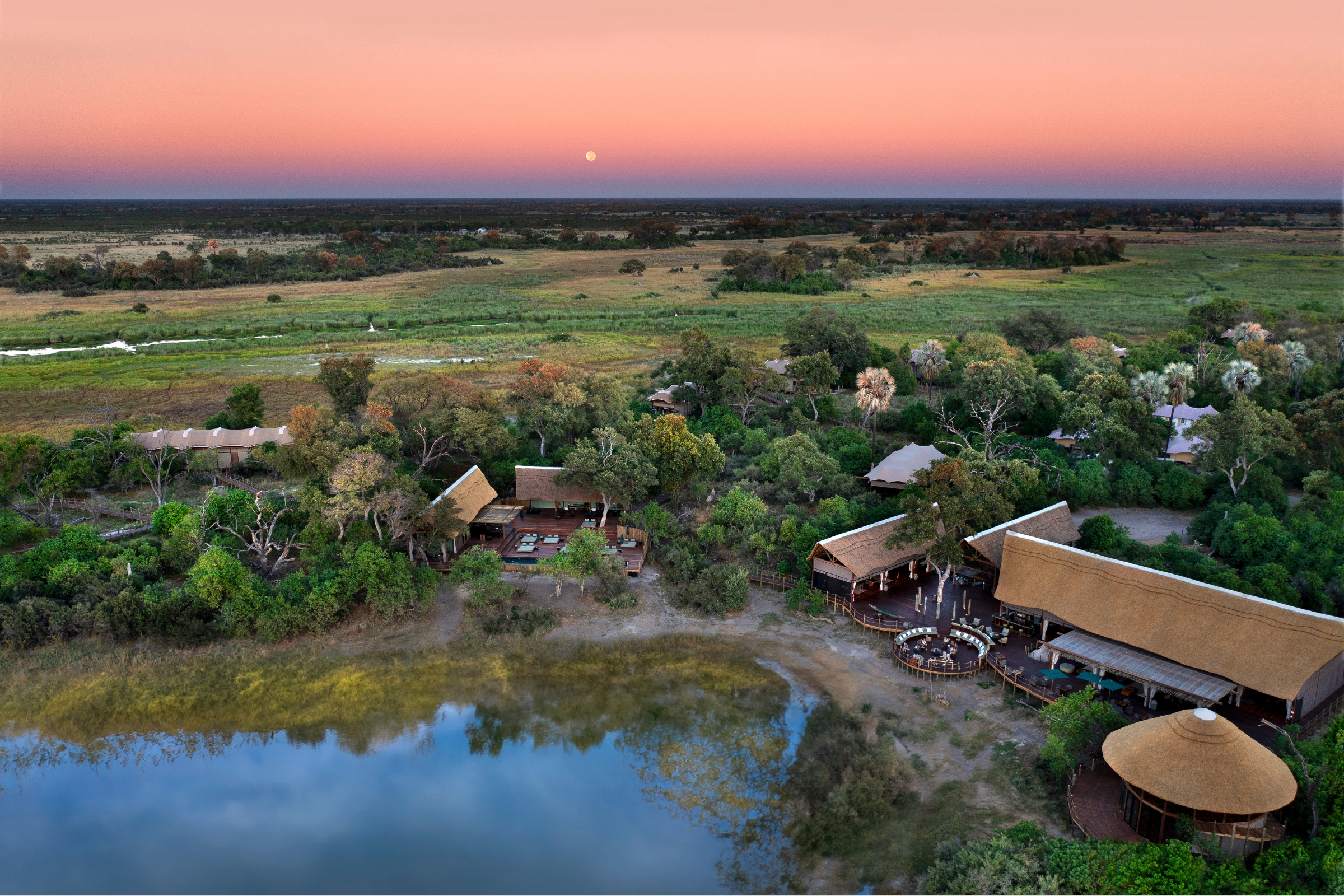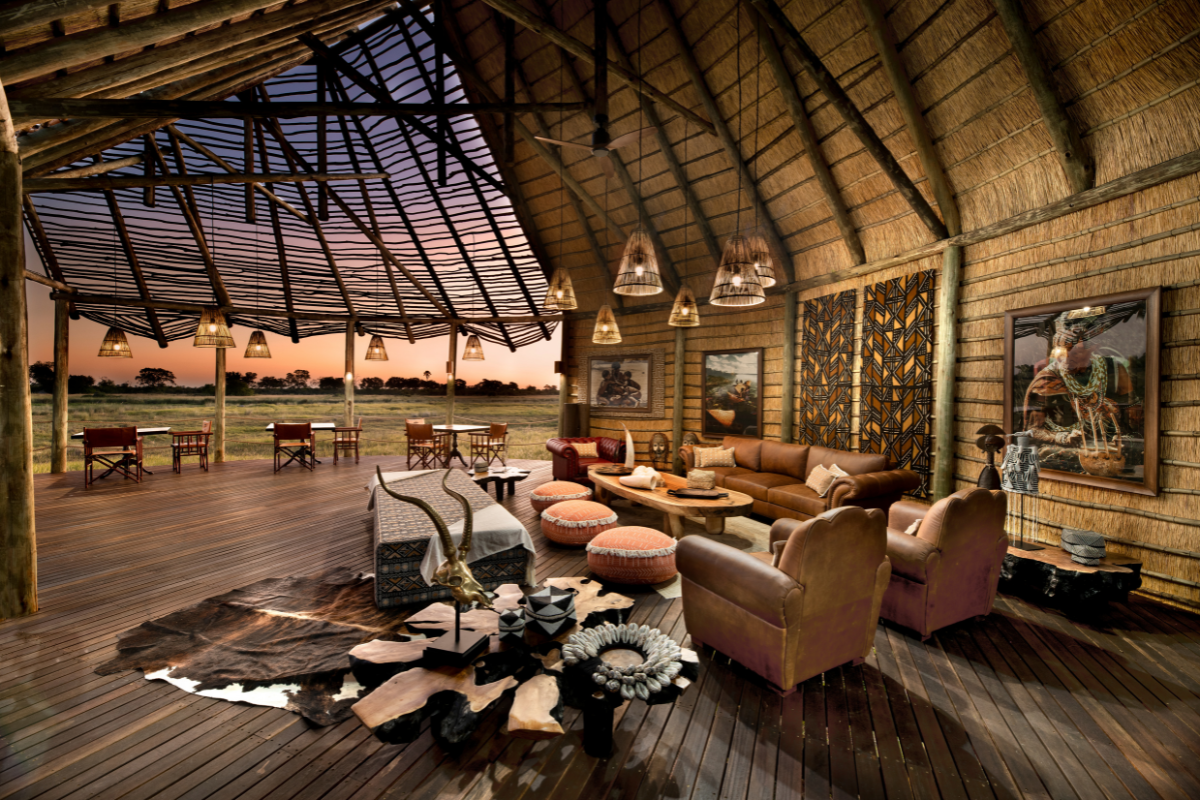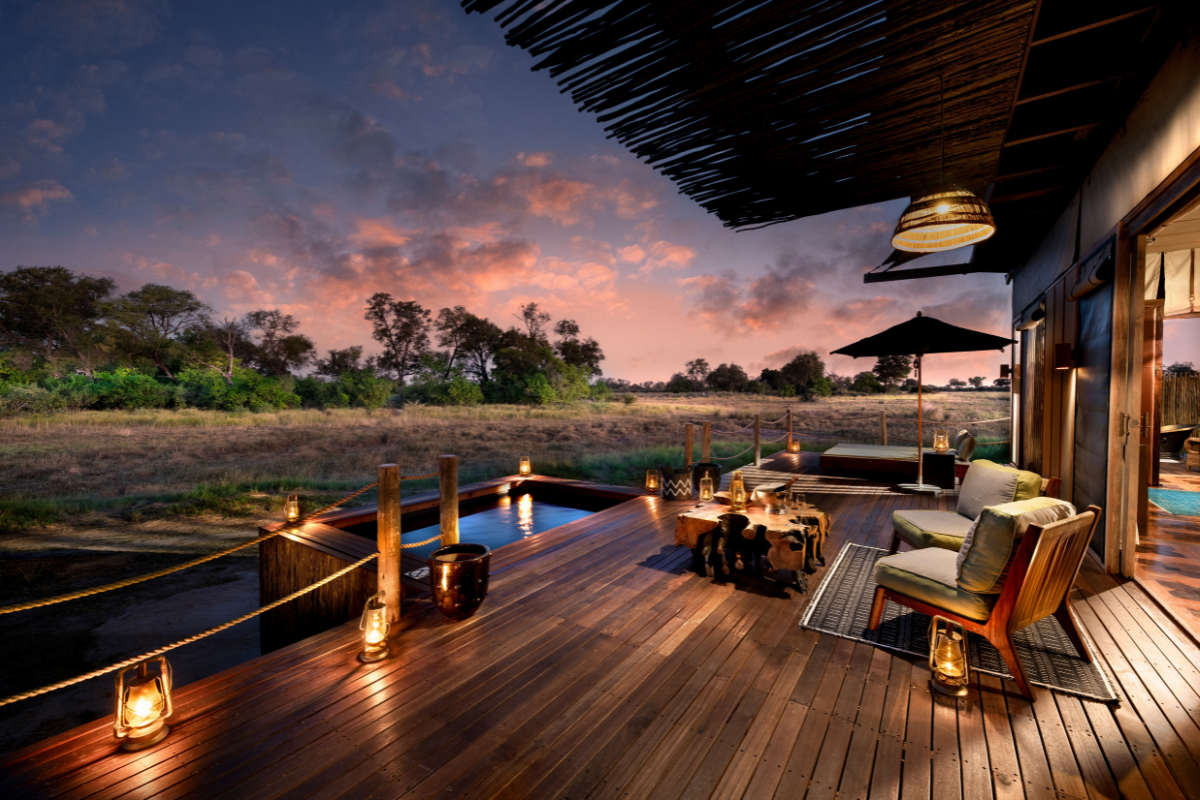It’s just past dawn, the seemingly infinite dark blue sky turning pink at the horizon as the sun slowly rises, and I’m bumping along a dirt track in an open-sided Toyota Land Cruiser in the heart of Botswana’s Okavango Delta. I’m on a game drive with three companions — all of us guests at the just-opened African Bush Camp Atzaro. Our vehicle is the only one in sight in this wild landscape; Atzaro’s private concession is, at 425 square miles, almost four times the size of the island of Malta.
As we excitedly chat about yesterday afternoon’s up-close-and-personal viewing of a large group of lion cubs drowsily piled on top of one another, suddenly our guide, Gosegonna Gontshamang, nicknamed Luckym, makes a hard turn toward a massive acacia tree and some fallen branches. In front of us stand five beautiful young cheetahs. That alone is enough to make us squeal with amazement, but just minutes after Luckym shuts off the engine, one of the cheetahs is off in a blur of movement, chasing what we quickly see is a baby warthog. Our excitement turns to alarm. Just as I’m about to cover my eyes, the baby’s parents come out of nowhere, bravely charging the cheetah head on. The cheetah, spooked, quickly changes direction, suddenly becoming the prey. All of us cheer. “Thank you, Luckym,” says Sarah, half of a couple from Zambia who have been on hundreds of safaris. She turns to the rest of us and says, “Just so you all know, this is not your normal game drive experience.”
I was beginning to understand that African Bush Camp Atzaro is not a standard safari camp either. It began as an unlikely collaboration between African Bush Camps’ Zimbabwean founder and CEO, Beks Ndlovu, formerly a safari guide, and Philip Gonda, co-owner of the small, design-forward hospitality company Atzaro, based in Ibiza. Two years ago, through a mutual friend, Gonda approached Ndlovu about teaming up, Ndlovu tells me as we talk later in the camp’s sprawling bar, lounge and living room, fronted by a long terrace. Over the past 18 years, Ndlovu has successfully built up an award-winning, sustainable company with 18 camps in three countries and a reputation as one of the most respected and ambitious environmentally-minded entrepreneurs in Africa.
As we talk, Ndlovu, a youthful-looking 40-something, weaves among wooden tables covered in beaded sculptures, bowls of ostrich eggs, coffee table books and an impressive collection of African art and collectible objects, from masks to textiles — an incredibly stylish mashup of vintage midcentury furniture and African antiques. Large woven pendant lights, like upside-down baskets, cast dramatic shadows on the walls. “We didn’t want to have that cliched, old-fashioned colonial look,” he says. “Here, we are celebrating Africa.”
Ndlovu beckons me to follow him along a wooden walkway, past the terrace, where a fire pit overlooks a dry, grass-edged lagoon. In the summer flooding season, the lagoon fills with water — which is why the camp is raised about 20 feet above the ground. (It’s also designed to leave a lighter footprint on the land.) We pass the open-air gym, yoga school, and lap pool with views of the lagoon, then continue on past the family tent — at over 4,000 square feet, bigger than most luxury apartments — to what is dubbed the Boma (a Swahili word that means “safe enclosure”). A large, modern-looking thatched structure, it looks as if it has been built by a giant weaverbird colony — impressive and welcoming. Ndlovu explains that it is the true heart of the camp, a space for gatherings that represents Africa’s past and future.
Later that afternoon, I relax in my 1,800-square-foot tented suite, lavishly outfitted with a private terrace, an elegant four-poster bed, parquet floors, midcentury antiques and, in the generous bath and dressing area, a deep copper bathtub. So content was I in this extravagant nest that I almost missed the early evening mokoro outing, an adventure along one of the delta’s canals. (A mokoro is a canoe-like boat traditionally crafted in the Okavango Delta from tree trunks — now sustainably made from molded fiberglass — helmed by a local who stands while using a long pole called a ngashi to propel the boat.) On our way to the launch point, I sit just behind Luckym, asking him about his childhood and the decisions that led him to be a guide. He explains that he is from Mababe, the nearest village to the camp, and that his mother had been one of the first female mokoro guides in the area. He learned to navigate the channels at an early age, often working for adventure travel companies and later qualifying as a safari guide. A few weeks before the camp opened, ABC asked him to train the guiding team. “They are already helping our village build water pumps and supporting the school,” he says of ABC. Equally inspiring to Luckym was the fact that Ndlovu had also been born in a small African settlement and had started as a guide. “He looks like me and speaks like me and has had a career as a guide like me,” says Luckym. “Working for African Bush Camp feels like a life of possibilities.”





